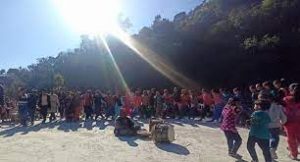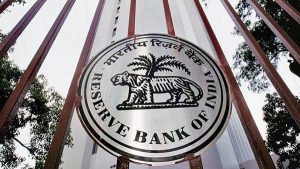Today’s Current Affairs: 3rd Jan 2024 for UPSC IAS exams, State PSC exams, SSC CGL, State SSC, RRB, Railways, Banking Exam & IBPS, etc
Table of Contents
Hattee Community : Scheduled Tribe Status

The Himachal Pradesh state government has finally issued notification to give Scheduled Tribe (ST) status to the Hattee community of Trans-Giri area of Sirmaur district.
- Hattee community are a close-knit community who got their name from their tradition of selling homegrown vegetables, crops, meat and wool etc. at small markets called ‘haat’ in towns.
- Their homeland straddles the Himachal-Uttarakhand border in the basin of the Giri and Tons rivers, both tributaries of the Yamuna.
- This community’s men generally don a distinctive white headgear during ceremonies, is cut off from Sirmaur by two rivers called Giri and Tons.
- Tons divide it from the Jaunsar Bawar area of Uttarakhand.
- The Hattees who live in the trans-Giri area and Jaunsar Bawar in Uttarakhand were once part of the royal estate of Sirmaur until Jaunsar Bawar’s separation in 1815.
- They are governed by a traditional council called Khumbli.
- The two Hattee clans, in Trans-Giri and Jaunsar Bawar, have similar traditions, and inter-marriages are common.
Direct-To-Mobile (D2M) Technology Services:

Indian telecom operators have asked the government to auction the spectrum that will be used for direct-to-mobile (D2M) technology services.
- D2M is similar to that of an FM radio, where a receiver within the device can tap into different radio frequencies.
- This new-age technology is a combination of broadband and broadcast that uses mobile phones to capture territorial digital TV signals.
- Using D2M, multimedia content, including live TV matches, can be streamed to phones directly without using the internet.
- D2M can ensure emergency alerts are delivered directly, reliably and without dependence on internet/cellular networks.
Disaster Management audio content is delivered directly and authentically in a targeted manner. - With D2M, governments can broadcast citizen-centric information.
- This approach benefits consumers by reducing their reliance on internet data consumption for staying informed and entertained.
UN Statistical Commission : India Four Year Term Member

India started its four-year term as a member of the United Nations Statistical Commission.
- UN Statistical Commission was established in 1947 and is the highest body of the global statistical system.
- It brings together the Chief Statisticians from member states from around the world.
- It is the highest decision-making body for international statistical activities, responsible for setting statistical standards and the development of concepts and methods, including their implementation at the national and international levels.
- The Statistical Commission oversees the work of the United Nations Statistics Division (UNSD), and it is a Functional Commission of the UN Economic and Social Council.
- The Commission consists of 24 member countries of the United Nations elected by the United Nations Economic and Social Council based on an equitable geographical distribution
- The term of office of members is four years.
- India was a member of the Statistical Commission last in 2004 and the country is returning to the UN agency after a gap of two decades.
Breach Of Genocide Convention 1948:

South Africa moved the International Court of Justice (ICJ), for an urgent order declaring that Israel was in breach of its obligations under the 1948 Genocide Convention.
- The term ‘genocide’ is often loosely used when speaking of attacks against various communities across the world.
- It has been defined using set criteria in the UN’s Convention on the Prevention and Punishment of the Crime of Genocide, moved in the General Assembly in 1948.
- It says, “In the present Convention, genocide means any of the following acts committed with intent to destroy, in whole or in part, a national, ethnical, racial or religious group, as such:
- Killing members of the group;
- Causing serious bodily or mental harm to members of the group;
- Deliberately inflicting on the group conditions of life calculated to bring about its physical destruction in whole or in part;
- Imposing measures intended to prevent births within the group;
- Forcibly transferring children of the group to another group.
- As per this convention the genocide is a crime whether committed during wartime or peacetime.
- India ratified the convention in 1959; there is no legislation on the subject.
New Hit-And-Run Law : Protest All Over India

The countrywide truckers’ stir has been called off recently as the government assured that it would consult stakeholders before implementing a contentious law against hit-and-run.
New hit-and-run law:
- As per the Bharatiya Nyay Sanhita (BNS), if a driver causes a serious road accident due to careless driving and then leaves without informing the police or any official, they could be punished with up to 10 years in jail and a fine of Rs 7 lakh.
- BNS has established two distinct categories under the umbrella of “causing death by negligence.”
- The first category addresses causing death through any rash or negligent act that does not amount to culpable homicide.
- Offenders in this category may face imprisonment for up to five years and a fine.
- The second category deals with causing death through rash and negligent driving, not amounting to culpable homicide.
- If the individual escapes without promptly reporting the incident to a police officer or magistrate, they could be subjected to up to 10 years of imprisonment and a fine.
Old hit-and-run law:
- The old, British-era IPC did not have a specific provision for hit-and-run cases.
- Actions in such cases were taken under Section 304 A of the IPC.
- As per this section, an individual causing the death of another due to a reckless or negligent act could face a maximum jail term of two years or a fine.
- All cases of hit-and-run, along with other forms of activities that came under the ambit of causing death by a “rash and negligent act” were lodged under Section 304A of the IPC.
River Devika Project At Its Final Stage:

North India’s first river rejuvenation project, ‘Devika’, is in the final stages. and it will be soon dedicated to the nation by the Prime Minister.
- River Devika Project built on the lines of ‘Namami Ganga’, the project was launched in February 2019.
- It is north India’s first river rejuvenation project.
- The project is implemented along the Devika River in Jammu and Kashmir.
- It has been included in the Government of India’s National River Conservation Project (NRCP).
- Under the project, bathing “ghats” (places) on the banks of the Devika River will be developed, encroachments will be removed, natural water bodies will be restored, and catchment areas will be developed along with cremation ground.
- The project includes the construction of three sewage treatment plants with 8 MLD, 4 MLD and 1.6 MLD capacities, a sewerage network of 129.27 km, the development of two cremation ghats, protection fencing and landscaping, small hydropower plants, and three solar power plants.
- Built at a cost of over Rs 190 crore, the sharing of fund allocation is in the ratio of 90:10 by the centre and UT, respectively.
- On completion of the project, the rivers will see a reduction in pollution and an improvement in water quality.
- It will offer a unique destination both for pilgrim tourists as well as recreation tourists, in addition to being a state-of-the-art cremation centre.
Green Honeycreeper : Sighted

Ornithologists in Colombia recently photographed a wild green honeycreeper with distinct half-green, or female, and half-blue, male, plumage.
- This distinct honeycreeper discovered had male plumage on one half of its body and female coloring on the other.
- This differs from the typical males of this species, which are bright blue with a black head, and the females, which are grass-green all over.
- The rare phenomenon is scientifically known as bilateral gynandromorphic.
- It arises from an error during female cell division to produce an egg, followed by double-fertilization by two sperm.
- Green Honeycreeper is a small bird in the tanager family.
- Scientific Name: Chlorophanes spiza
- Conservation Status:
- IUCN Red List: Least Concern
India As a Global MICE Destination:

The Ministry of Commerce & Industry is promoting India as a global MICE (Meetings, Incentives, Conferences, and Exhibitions) destination.
- The objective is to showcase India’s MSME sector, traditional handicrafts, artisanal offerings, weavers, and manufacturing prowess internationally.
- The Ministry also unveils India’s ambitious Mega Events line-up for the coming months; Aatmanirbhar Bharat Utsav, Indus Food, Bharat Mobility Global Expo 2024 and Bharat Tex.
MICE (Meetings, Incentives, Conferences and Exhibitions):
- MICE is a term used in the tourism and events industry to categorize and represent a segment related to business and corporate tourism.
- MICE tourism involves organizing and hosting events, meetings, conferences, exhibitions, and incentives for companies and groups.
- These activities aim to facilitate networking, knowledge exchange, business collaborations, and the showcasing of products and services within a professional or business context.
- The main purpose is to create a networking platform for business, industry, government and Academic Community and engage in meaningful conversations.
- Indian MICE has less than 1% share in the estimated global MICE business despite the natural & cultural advantages of India and being one of the highest growing economies.
Dividend Payout Ratio For Healthy Banks : RBI

The Reserve Bank of India has released draft norms allowing banks with strong financial metrics to increase dividend payouts to shareholders up to 50% of profits, from the earlier 40% ceiling.
- The RBI emphasized it won’t entertain discretionary dispensations for dividends, mandating strict eligibility compliance.
- This ensures only fundamentally strong banks pay higher returns based on real performance.
Key Highlights:
- Banks must have net non-performing asset ratio below 6% for past 3 years
- Minimum required capital adequacy levels should also be met
- 50% payout ratio applicable for zero net NPA banks
- Ceiling reduces on higher bad loans – just 15% if over 4% NPA
- One-time gain items excluded from dividend calculations
- Eased repatriation for foreign bank branches meeting criteria




